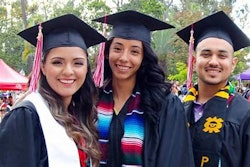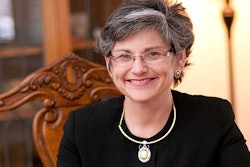WASHINGTON, D.C. – The Obama administration made major cash infusions to community colleges and Hispanic-Serving Institutions on Monday through grant programs meant to spur innovation and prepare students and displaced workers for high-tech jobs that pay good money.
The largest award was the long-awaited $500 million grant to a select group of community colleges or community college-led consortiums through the Trade Adjustment Assistance Community College and Career Training initiative.
The winners include institutions or consortiums from the District of Columbia and 35 states, which will all get at least $2.5 million for training programs. States that didn’t win will be contacted by the initiative’s administrators to develop a qualifying project that will immediately get $2.5 million as well.
The grants are meant to enable institutions to expand their capacity to get students prepared for jobs in fields that range from advanced manufacturing and transportation to health care and STEM fields, said officials at the U.S. Departments of Education and Labor. The $500 million is the first installment of the $2 billion the Obama administration has pledged to community colleges.
Higher education experts say that, while the Trade Adjustment Assistance initiative may not yield results immediately, in the long term it will prepare students for jobs in areas where growth is anticipated. They also say it will reshape the way community colleges operate.
“I saw investments that are really trying to shake up the way community colleges do business in a way that’s going to align the operations better with the jobs that are going to be available to people in the economy,” said Louis Soares, director of the Postsecondary Education Program at the Center for American Progress, a nonprofit organization that promotes “progressive” policies and programs, referring to the grantees.
“There’s a lot of scale there, a lot of change in the proposals, which leaves it incumbent on the partnerships and the departments (of Education and Labor) to make sure the change that is intended takes place,” Soares added.
Among other things, Soares said, the grants of the Trade Adjustment Assistance fund projects that—through consortiums that involve partners in different states—seek to make credentials usable in multiple places instead of in just one region.
“By having them work together, you end up with credentials that are highly portable, so they’re not limited to that regional economy,” Soares said. “That’s a critical piece of innovation that the administration is trying to get at in these grants.”
Soares also said grantees need to devote considerable effort to meeting the needs of the students they serve, namely through flexible financial assistance, flexible scheduling that takes child care needs into account, transportation issues for low-income students and any needed remediation.
But beyond the stated purpose of the grants are questions about whether the training that students receive will enable them to get jobs or just hang their certificates on the wall.
“Our best labor market data suggest that, as the economy picks up, there will be good jobs,” Soares said.
Among the grantees is Anne Arundel Community College.
“This is going to allow us to develop with our consortium partners—community colleges in nine states, those states that have had massive layoffs—high-quality, market-driven STEM credentials that are in demand,” said Dan Baum, spokesman for Anne Arundel Community College, in reference to his school’s portion of the grant money.
According to a description of the college’s winning grant proposal, Anne Arundel Community College will lead a group called The National STEM Consortium, which consists of 10 community colleges from states that range from Florida to Washington State, to “develop nationally portable, certificate-level programs in STEM and to build a national model of multi-college cooperation in the design and delivery of high-quality, labor-market-driven occupational programs.”
“The programs developed by the consortium will help build a national repository of high-quality technical curricula and curricular materials that can be made available at no charge to all community colleges,” a project description says.
Baum said a special emphasis will be placed on cyber technology credentials at Anne Arundel.
“We’re taking the lead on cyber technology,” Baum said. “The purpose is really to enable displaced and underemployed workers who need some type of fast track to obtain credentials in these areas, faster credentials, preparing them for jobs in high-demand areas.”
Cyber technology, Baum said, is expanding because the need for cyber security exists in so many different fields.
“We know that this is a growing field, and it’s not just for national security,” Baum said. “This covers health, legal … . The need for cyber protection is significant, and it’s going to continue to grow.”
Aid for Hispanic-Serving Institutions
The other big federal higher education award announced Monday was a $107.4 million U.S. Department of Education grant program meant to strengthen and expand educational opportunities for Latino students at Hispanic-Serving Institutions.
According to the Education Department, roughly $100 million is designated for 109 grants that will enhance STEM components at schools that enroll a high percentage of Hispanic students.
“The grants may be used for purposes such as scientific or laboratory equipment for teaching, the construction or renovation of facilities, purchasing educational materials, academic tutoring or counseling programs, teacher education, and student support services,” the Education Department said in a release.
The remaining $7.8 million will be awarded through 13 grants through the Developing Hispanic-Serving Institutions program to help schools further educational opportunities for students through faculty development, curriculum development, academic tutoring and mentoring and other services, the department said.
“The impact of this for the Latino community is significant because not only is it going to institutions that have a high concentration of Latino undergraduates, but it’s also in academic areas of need, where Latinos tend to be underrepresented,” said Deborah A. Santiago, vice president for Policy and Research at Excelencia in Education, a D.C.-based organization that focuses on policies and practices aimed to better serve Latino students.


















